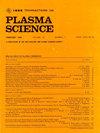核聚变应用中脉冲功率发展的挑战和差距:来自工业、学术界和国家实验室专家的预路绘图视角
IF 1.5
4区 物理与天体物理
Q3 PHYSICS, FLUIDS & PLASMAS
引用次数: 0
摘要
核聚变能源满足了21世纪可持续、无处不在和更安全的能源的世界大挑战。然而,利用核聚变能源的前景已被证明是难以捉摸的。核聚变电厂设计的竞争方法包括惯性约束核聚变、国家点火装置(ICF-NIF, Z机等)、磁约束核聚变(mcf -托卡马克,造星器等),以及其他在小型(流动稳定的Z钳)或大规模应用中显示出前景的方法。在私人和公共资金的支持下,这些方法正在加速发展,并试图证明以核聚变为基础的发电厂采用不同方法的可行性。然而,在没有明确的“主导设计”的情况下,如何加速这些颠覆性技术基础所需的脉冲功率技术?路线图有望确定和开发实验室、原型和商业聚变的通用关键脉冲功率组件,并可以加速聚变反应堆设计的商业化。2023年6月,在美国德克萨斯州圣安东尼奥举行的IEEE国际脉冲功率会议上,举行了一次关于脉冲功率核聚变的预映射研讨会。研讨会共有177人参加。本文确定了许多争夺主导设计的ICF技术的共同要素。通过路线图绘制这些技术的进步将提高商业期望,要求它们在未来五年以及未来五到十年快速和创新地发展。确定的支撑和限制核聚变功率发展的关键技术包括脉冲功率技术,如能量存储、高压开关、增材制造和模块化脉冲功率电路拓扑。它们是我们在下面的路线图场景中努力的重点,它将描述技术发展的潜在路径。本文章由计算机程序翻译,如有差异,请以英文原文为准。
Challenges and Gaps in the Development of Pulsed Power for Fusion Applications: A Preroadmapping Perspective From Industry, Academia, and National Laboratory Experts
Fusion energy meets the twenty-first century World Grand Challenge of sustainable, ubiquitous, and safer energy sources. However, harnessing the promise of fusion energy has proven elusive. The competing approaches to fusion power plant design include inertial confinement fusion, National Ignition Facility (ICF-NIF, Z machine, etc.,) magnetic confinement fusion (MCF-Tokamak, stellarators, etc.), and other approaches that show promise in small- (flow stabilized Z pinches) or large-scale applications. These approaches are being accelerated with private and public funding and seek to demonstrate the feasibility of different approaches to fusion-based power plants. Yet, how can the necessary pulsed power technologies for these disruptive technology bases be accelerated with no clear “Dominant Design?” Roadmapping holds the promise to identify and develop common critical pulsed power components for laboratory, prototype, and commercial fusion, and can accelerate the commercialization of fusion reactor designs. A preroadmapping Workshop on Pulsed Power for Fusion was held at the IEEE International Pulsed Power Conference in San Antonio, TX, USA, in June 2023. The workshop had 177 attendees. Here, the common elements for many of the ICF technologies vying for dominant design were identified. The advancement of these technologies through roadmapping will enhance commercial expectations that require their rapid and innovative development in the next five years, as well as the next five to ten years. The key technologies identified that underpin and limit the advancement of fusion power include pulsed power technologies such as energy storage, high-voltage switching, additive manufacturing, and modular pulsed power circuit topologies. They are the focus of our effort in the following roadmap scenario, which will delineate potential paths to technology development.
求助全文
通过发布文献求助,成功后即可免费获取论文全文。
去求助
来源期刊

IEEE Transactions on Plasma Science
物理-物理:流体与等离子体
CiteScore
3.00
自引率
20.00%
发文量
538
审稿时长
3.8 months
期刊介绍:
The scope covers all aspects of the theory and application of plasma science. It includes the following areas: magnetohydrodynamics; thermionics and plasma diodes; basic plasma phenomena; gaseous electronics; microwave/plasma interaction; electron, ion, and plasma sources; space plasmas; intense electron and ion beams; laser-plasma interactions; plasma diagnostics; plasma chemistry and processing; solid-state plasmas; plasma heating; plasma for controlled fusion research; high energy density plasmas; industrial/commercial applications of plasma physics; plasma waves and instabilities; and high power microwave and submillimeter wave generation.
 求助内容:
求助内容: 应助结果提醒方式:
应助结果提醒方式:


